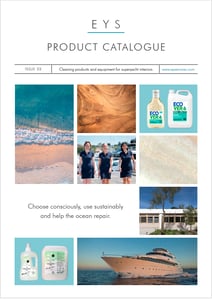When purchasing cleaning products, you have probably seen the terms “sanitiser” and “disinfectant”. Despite what many people might think, they are not the same thing. Simply put, sanitising reduces the number of germs to a safe level in accordance with regulations. Disinfecting kills all, or almost all, germs.
When should I simply clean, when do I sanitise, and when do I disinfect?
- In most instances, when cleaning private residences and yachts a thorough and regular cleaning by the Best maids in Toronto with (quality microfibre cloths) hot water and a detergent will suffice.
Thorough cleaning reduces germs, removes grease and food particles that the germs can feed on, and when we dry the surface we remove the moisture that germs love to breed in.
- However, if someone is suffering from a contagious illness such as flu, H1N1, or a tummy bug, we recommend that you sanitise surfaces in communal areas or shared spaces, and frequently touched surfaces such as door handles, handrails, and worktops. Alcohol-based sanitizers kill most types of germs (such as bacteria, viruses and fungi) in a few seconds.
- There is evidence to suggest that unnecessary use of disinfectants can lead to allergies and potentially create disinfectant-resistant microbes, or “superbugs.” For that reason, we generally do not recommend disinfectants for daily use in the home, except on high-risk surfaces such as those that have come into contact with vomit, faeces, or bodily fluids such as saliva, mucous, blood or urine.
- We also recommend using a disinfectant if someone is suffering from Norovirus or has an e-coli infection. Again, concentrate on high-touch surfaces such as door handles and knobs, elevator buttons, worktops, stair railings, toilets and bidets. a contagious illness such as flu or a tummy bug. If someone has a weakened immune system, talk to their doctor about any special cleaning measures you need to take.
So, you now have an idea of when you should generally use sanitisers and disinfectants.
Next, we’ll look at how they work. But first things first: You cannot sanitise or disinfect a dirty surface! Before you sanitise or disinfect, clean, rinse and dry the surface to remove any visible traces of dirt or soiling.
Sanitisers work quite differently from disinfectants. You allow sanitisers to evaporate from the surface. When the sanitiser has evaporated, the antibacterial effect is lost but, at that point, bacteria germs have been reduced to a safe level. Always check the expiry date of a sanitiser or disinfectant before use. If it is out-of-date, the product may not be effective.
- Before you sanitise, ensure you are wearing suitable PPE for the job at hand – gloves to protect your hands, a face mask to prevent you from inhaling vapors, and an apron to protect your clothing.
- As with all chemicals, always read and follow the manufacturer’s instructions. Remember: Sanitisers and disinfectants are high on the pH scale and, by nature, they are very drying. So beware of the drying and dulling effect these can have on surfaces over time.
- Apply your sanitising solution to the clean, dry surface.
- Allow it to air-dry for a minimum 30 to 60 seconds.
- Do not rinse.
There are many different types of disinfectant. They vary in strength depending on their intended use. Depending on their ingredients, some may be more effective in killing germs that make us sick such as bacteria, viruses, and mould. You can purchase disinfectants in ready-to-use form, or you can create a disinfectant solution by diluting a concentrate as directed. The pH of disinfectants varies depending on the ingredients. As with all cleaning chemicals, disinfectants can cause damage to surrounding surfaces if used incorrectly Always use a drop cloth, spare cleaning cloth to protect surrounding surfaces and if applying a ready-to-use format, spray the disinfectant onto your cloth not onto the surface.
- As with any cleaning task, before you handle disinfectant, ensure you are wearing suitable PPE for the job at hand – at the very least, gloves to protect your hands, a face mask to prevent you from inhaling vapours, and an apron to protect your clothing.
- As with all chemicals, always read and follow the manufacturer’s instructions.
- Prepare enough disinfectant solution for one day only.
- Apply your disinfectant solution to the clean, dry surface.
- Adhere to the manufacturer’s recommended dwell time. Dwell time is the amount of time the disinfectant must be in contact with the surface, and remain wet, to work as described.
- When the dwell time has elapsed, wipe the surface with fresh, hot water and a clean cloth to remove any chemical residue, and dry with a fresh cloth. This step is very important because any residue left behind can be ingested or absorbed through the skin.
- Check the label and always follow the manufacturer’s disposal instructions. In many cases, you will be able to dispose of it into the household sewage system by running cold water down the sink, pouring the disinfectant solution down after it, and allowing the tap to run for moments afterwards to dilute the solution. If you have a septic tank or bacterial waste system, do not dispose of disinfectant in this way.


